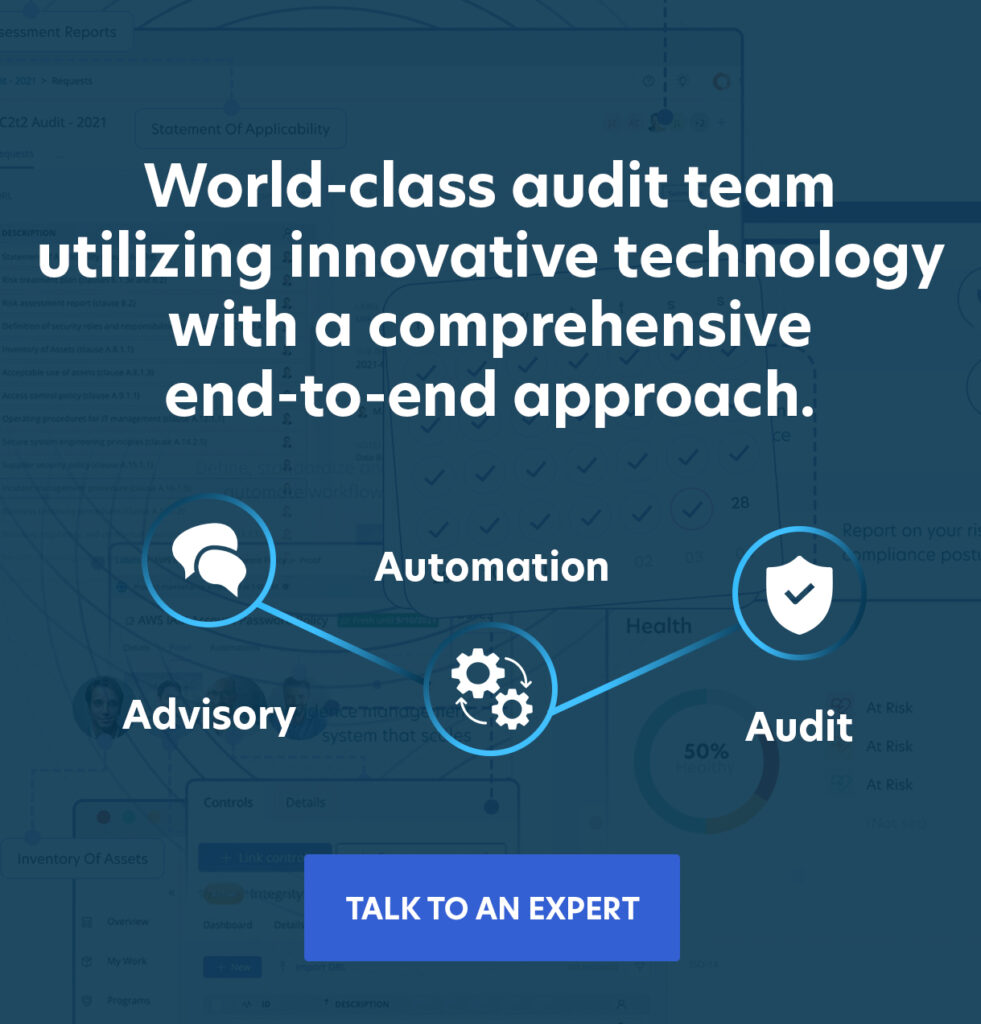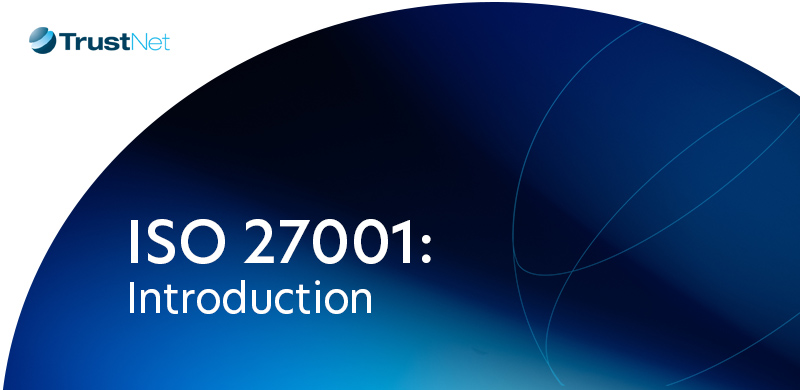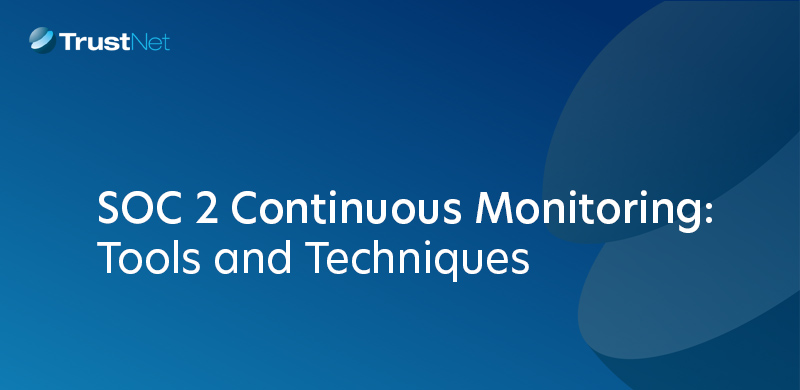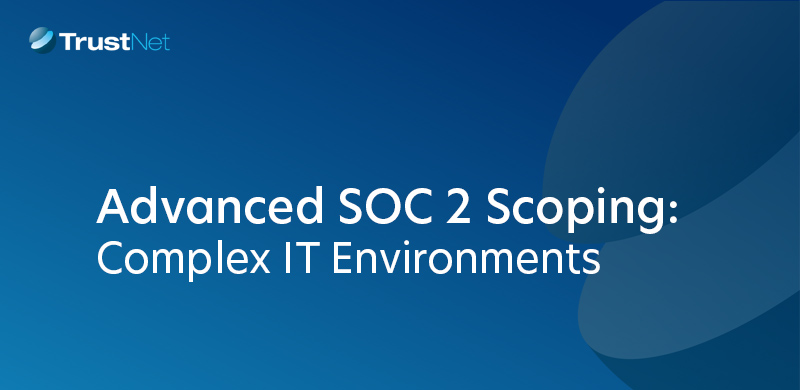SOC 2 FAQs
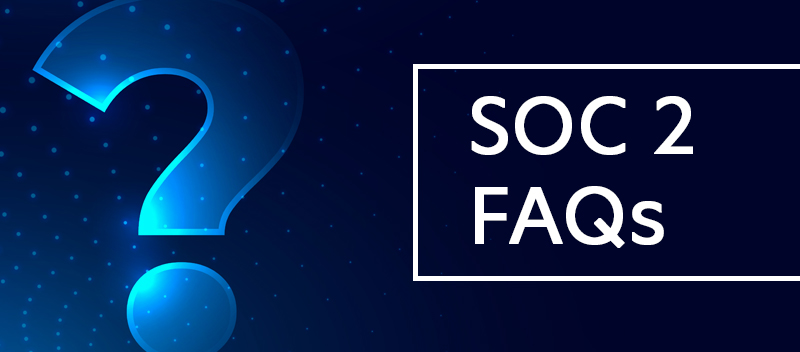
1. What is SOC 2, and why is it important?
2. Who needs to undergo an SOC 2 audit?
3. What is the difference between Type I and Type II SOC 2 reports?
4. How long does a SOC 2 audit typically take?
5. Are SOC 2 audits accessible for businesses of all sizes?
6. What are the costs associated with a SOC 2 audit?
7. How can we prepare for a SOC 2 audit?
8. What are the Trust Services Criteria, and how does it apply to SOC 2?
9. What are the common criteria applied to SOC 2?
10. What is the SOC 2 controls list?
11. What are the benefits of achieving SOC 2 compliance?
12. Can we reuse existing security controls for SOC 2 compliance?
13. What happens after achieving SOC 2 compliance?
14. How frequently should you undergo SOC 2 audits to maintain compliance?
15. How do SOC 2 audits align with our compliance requirements, such as PCI DSS and ISO 27001?
1. What is SOC 2, and why is it important?
SOC 2, or Systems and Organization Controls 2 compliance, is about meeting the standards set by the American Institute of Certified Public Accountants (AICPA) for managing customer data. This management is evaluated based on the five Trust Services Criteria (Security, Availability, Processing Integrity, Confidentiality, and Privacy)
Achieving SOC 2 compliance signifies that a company has established robust data protection measures and adheres to them consistently and effectively. SOC 2 compliance assists businesses in setting up and maintaining stringent data protection standards, fostering confidence with their customers and stakeholders.
2. Who needs to undergo an SOC 2 audit?
A wide range of service firms that receive, store, or process consumer data should consider conducting SOC 2 audits, particularly where proving a dedication to data security and compliance is crucial. Examples are:
-
- Healthcare: With the increasing digitization of patient records and medical data, healthcare providers and related service companies must ensure that they meet high data protection standards.
- Financial Services: Banks, investment firms, and payment processors deal with highly confidential financial information. SOC 2 compliance helps these entities demonstrate their dedication to protecting clients’ financial data.
- Cloud Computing Services: Cloud services need to have strong controls over data security, availability, and privacy because of their role in processing and storing enormous volumes of data.
- SaaS Providers (Non-Financial Impact): SaaS platforms that may not impact financial reporting directly but handle customer data, requiring stringent controls over data security and privacy.
SOC 2 audits are essential for businesses in sectors where compliance, data security, and privacy are critical.
3. What is the difference between Type I and Type II SOC 2 reports?
Both SOC 1 and SOC 2 audits produce Type 1 and Type 2 reports, each of which has a distinct purpose in evaluating the internal controls of a service company.
SOC 2 Type 1:
-
- SOC 2 Type 1 focuses on a point-in-time assessment.
- Assesses the design of controls related to security, availability, processing integrity, confidentiality, and privacy.
- Verifies that the service organization’s systems are designed to meet the relevant Trust Services Criteria at a specific date.
It is suitable for service organizations needing to prove their system controls’ design effectiveness at a particular time.
SOC 2 Type 2:
-
- Evaluates over a period, typically a minimum of six months
- This examines the design and operational effectiveness of the service organization’s controls related to the Trust Services Criteria.
- Provides a more detailed and comprehensive view, offering assurance about the effectiveness of controls over time, not just their design.
- Best for organizations that want to demonstrate ongoing compliance and effectiveness in managing data according to industry best practices and standards.
The choice between Type 1 and Type 2 will depend on the organization’s specific needs, its clients’ requirements, and regulatory obligations.
4. How long does a SOC 2 audit typically take?
Phase 1 – Readiness Assessment: (3 to 6 Weeks)
This initial stage involves both onsite and offsite evaluations. The aim is to assess the current state of your organization’s systems and controls. This readiness assessment allows the identification of potential gaps or weaknesses in areas such as documentation of policies and procedures, system configuration, audit trails, and usage of technical resources. This phase serves as a diagnostic tool to prepare your organization for the later stages of the audit.
Phase 2 – Remediation: (2 to 8 Weeks)
Following the initial assessment, this phase addresses the identified issues. This is the time to make the necessary changes to rectify the discrepancies in the readiness assessment. These modifications can involve using various technical resources, implementing new or revised procedures, creating or updating documentation of policies and procedures, altering system configurations, and ensuring the retention of audit trails by preserving evidentiary elements. This stage is crucial as it prepares the client for the final evaluation.
Phase 3 – Assessment and Reporting: Type 1: (4 to 6 Weeks) Type 2: (7 months)
This final stage requires an evaluation to demonstrate the rectifications’ effectiveness during the remediation phase. This includes a primary and secondary round of testing to ensure that the implemented changes have effectively addressed the previously identified gaps. The results of these tests are then documented in a detailed report. This report will determine whether the organization has successfully met the criteria for SOC 2 certification.
It’s important to note that a SOC 2 audit isn’t just a one-off event but a perpetual data security commitment. Regular monitoring and ongoing improvements are essential in keeping up with compliance and protecting the interests of your stakeholders.
5. Are SOC 2 audits accessible for businesses of all sizes?
Yes, SOC 2 audits are accessible for businesses of all sizes, contrary to the common misconception that they are only suitable for large enterprises. While the process can be resource-intensive, smaller businesses can achieve compliance by tailoring their approach to fit their specific needs and budgets.
6. What are the costs associated with a SOC 2 audit?
Average Costs for Small Businesses: While exact costs fluctuate, expect SOC 2 costs for small businesses starts at $30,000. Factors influencing cost include:
-
- Company complexity: Businesses with simpler operations and data flows will likely incur lower costs.
- Scope of compliance: A Type 1 SOC 2 report (focusing on system design) generally costs less than a Type 2 report (evaluating control effectiveness).
- Vendor selection: Choosing an experienced SOC 2 auditor familiar with small businesses can optimize costs.
Average Costs for Medium-Sized Businesses: Anticipate SOC 2 costs for medium businesses to start at $37,000. This wider range reflects the greater complexity of medium-sized businesses compared to small businesses.
Average Costs for Large-Scale Businesses: Large enterprises usually face costs starting at $42,000. This is due to factors like:
-
- Global operations: Managing compliance across multiple locations and regulations increases complexity and cost.
- Diverse data landscapes: The sheer volume and variety of data handled by large corporations necessitates more extensive controls and audits.
7. How can we prepare for a SOC 2 audit?
Here’s how to prepare for a SOC 2 audit:
-
- Define Control Objectives: Focus on the Trust Services Criteria applicable to your services—security, availability, processing integrity, confidentiality, and privacy.
- Identify Relevant Controls: Map out controls that address the chosen Trust Services Criteria and cover how your organization safeguards and manages data.
- Engage a Qualified CPA Firm: Select a CPA firm seasoned in SOC 2 audits like TrustNet to ensure your controls meet the rigorous requiremnts of the Trust Services Criteria.
- Implement Necessary Remediation Measures: To remediate any control deficiencies to align with the standards set by SOC 2.
A SOC 2 audit report includes the auditor’s opinion, management’s assertion, a system description, and tests of controls. Each section provides insights into the organization’s adherence to security, availability, processing integrity, confidentiality, and privacy criteria. Thorough documentation and evidence are crucial, as they support the audit findings and assure stakeholders of the organization’s commitment to data security and operational integrity.
8. What are the Trust Services Criteria, and how does it apply to SOC 2?
SOC 2 Compliance is built around the five “Trust Services Criteria,” namely security, availability, processing integrity, confidentiality, and privacy.
Security. Information and systems are protected against unauthorized access, unauthorized disclosure of information, and damage to systems that could compromise the availability, integrity, confidentiality, and privacy of information or systems and affect the entity’s ability to achieve its objectives.
Security refers to the protection of
i. information during its collection or creation, use, processing, transmission, and storage, and
ii. systems that use electronic information to process, transmit or transfer, and store information to enable the entity to meet its objectives. Controls over security prevent or detect the breakdown and circumvention of segregation of duties, system failure, incorrect processing, theft or other unauthorized removal of information or system resources, misuse of software, and improper access to or use of, alteration, destruction, or disclosure of information.
Availability. Information and systems are available for operation and use to meet the entity’s objectives.
Processing Integrity. System processing is complete, valid, accurate, timely, and authorized to meet the entity’s objectives.
Confidentiality. Information designated as confidential is protected to meet the entity’s objectives. Confidentiality addresses the entity’s ability to protect information designated as confidential from its collection or creation through its final disposition and removal from the entity’s control in accordance with management’s objectives.
Privacy. Personal information is collected, used, retained, disclosed, and disposed of to meet the entity’s objectives.
9. What are the common criteria applied to SOC 2?
-
- Security: This protects information and systems against unauthorized access, ensuring that data remains safe through risk management and access controls. It serves as the foundation of the SOC 2 framework, as all other categories rely on secure systems.
- Availability: This ensures that the systems are operational and accessible as stipulated in the agreements. Subcategories include monitoring system performance and managing incidents effectively to maintain service commitments.
- Processing Integrity: It addresses whether system processing is complete, valid, accurate, timely, and authorized. This is crucial for organizations that rely on precise data processing, with elements like data processing accuracy being key.
- Confidentiality: This involves protecting confidential information and ensuring that data is adequately safeguarded from unauthorized disclosure. Practices such as data encryption and access restrictions are typical subcategories.
- Privacy: This focuses on personal information management, ensuring compliance with privacy commitments and principles such as notice, choice, consent, and user access regarding their data.
10. What is the SOC 2 controls list?
Security Controls:
The core of SOC 2 compliance emphasizes strong defenses against digital and physical threats.
Includes systems like two-factor authentication and well-defined access policies.
Privacy Controls:
-
- Ensures sensitive data is managed with user consent and collected by lawful means.
- Focuses on limiting data collection and ensuring proper usage and disposal.
Confidentiality Controls:
-
- Ensures secure sharing of sensitive information, such as health data.
- Requires clear identification, protection, and timely destruction of confidential data.
Processing Integrity Controls:
-
- Verifies if systems operate correctly with reliable input-output processes.
- Prioritizes quick error detection and correction to maintain data accuracy.
Availability Controls:
-
- Minimizes downtime, which is crucial for SaaS and cloud services.
- Involves secure backups, disaster recovery, and thorough risk assessments to uphold service continuity.
11. What are the benefits of achieving SOC 2 compliance?
— Increased Trust and Credibility:
-
- SOC 2 certification enhances trust with clients and investors by showcasing a strong commitment to data security and compliance.
- Builds stronger business relationships and opens up new opportunities.
— Enhanced Security Posture:
-
- Implementation of robust SOC 2 security controls reduces the risk of data breaches.
- Protects the organization’s reputation and helps avoid costly security incidents.
— Improved Operational Efficiency:
-
- Streamlined security practices lead to operational efficiencies and cost savings.
- Simplifies future audits and compliance efforts, saving time and resources.
12. Can we reuse existing security controls for SOC 2 compliance?
Yes, businesses can leverage existing security controls to achieve SOC 2 compliance, which can be a strategic and cost-effective approach. By aligning current controls with the SOC 2 Trust Services Criteria, companies can optimize their resources and avoid the redundancy of implementing entirely new systems.
13. What happens after achieving SOC 2 compliance?
Below are the key aspects of maintaining SOC 2 compliance:
-
- Continuous Monitoring: Implement continual monitoring practices to ensure effective controls remain in place and any changes or upgrades in processes or systems are identified and addressed quickly. This may involve automated systems or regular manual checks.
- Conduct Regular Control Tests: Conduct regular audits or third-party assessments to test controls to assess their effectiveness, either internally or by third parties. Be thorough; cover all objectives listed in your SOC 2 Report in your testing efforts.
- Documentation: Document all monitoring and testing activities with meticulous records, such as nature of activity performed, date performed, and any findings and any corrective actions taken.
- Annual Renewal of SOC 2 Reports: SOC 2 reports generally expire every twelve months; therefore, organizations should undergo an independent audit every year in order to renew their SOC 2 reports and ensure their controls remain up-to-date and reviewed regularly.
- Bridge Letters: Organizations can provide a bridge letter when there’s a gap between the end of the last reporting period and the date of the current report request. This letter describes any significant changes to the controls or environment and assures the effectiveness of controls during the gap period.
14. How frequently should you undergo SOC 2 audits to maintain compliance?
The frequency of these audits depends on several factors, including the type of SOC 2 report and other compliance needs.
-
- Annual Audits: It’s common for organizations to conduct SOC 2 audits annually to provide stakeholders with updated assurance of their security posture. This schedule aligns with typical industry standards and client expectations.
- Type I vs. Type II: Organizations opting for a SOC 2 Type I report, which evaluates controls at a specific point in time, might conduct audits less frequently than those choosing a Type II report, which assesses controls over a period. Type II reports often require ongoing assessments to monitor control effectiveness continuously.
- Industry Requirements: Some industries may necessitate more frequent audits due to regulatory demands or heightened risk environments. Understanding these requirements is crucial to setting an appropriate audit schedule.
- Client Demands: Clients may request more frequent audits to ensure consistent data protection and adherence to service agreements, especially in sectors where data security is paramount.
- Operational Changes: Significant changes in operations, IT infrastructure, or risk profiles should prompt a review of the audit schedule. Regular assessments help identify new vulnerabilities and adapt controls accordingly.
15. How do SOC 2 audits align with our compliance requirements, such as PCI DSS and ISO 27001?
Understanding how SOC 2 aligns with other frameworks can streamline your compliance efforts and bolster your security posture:
-
- Privacy Alignment: Both SOC 2 and GDPR emphasize the importance of privacy. By aligning these frameworks, you can ensure that privacy policies are robust and compliant across different regions.
- Risk Management and Continuous Improvement: SOC 2 and ISO 27001 both prioritize risk management and the continuous improvement of an organization’s Information Security Management System (ISMS) security practices.
- Data Security and Confidentiality: SOC 2’s confidentiality principle is in harmony with HIPAA’s requirements. Leveraging this overlap ensures that sensitive health information is doubly protected under both standards.
- Security Measures: PCI DSS and SOC 2 have stringent security requirements, which can be coalesced to create a unified approach to securing payment and other sensitive data.
Talk to an expert today.
Subscribe to the TrustNet Newsletter
actionable cybersecurity strategies, and TrustNet’s cutting-edge solutions.

